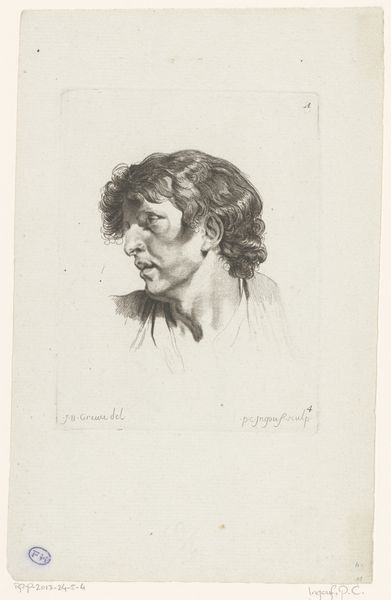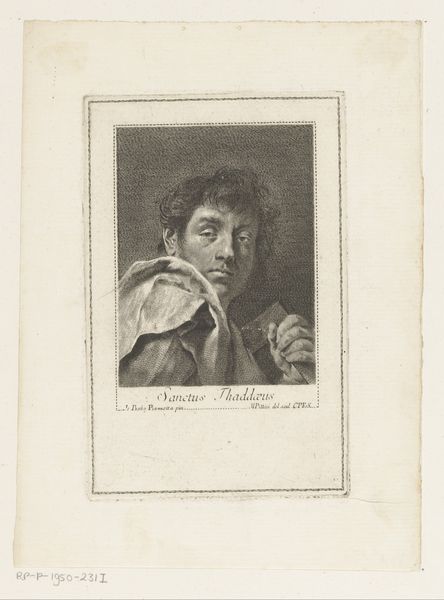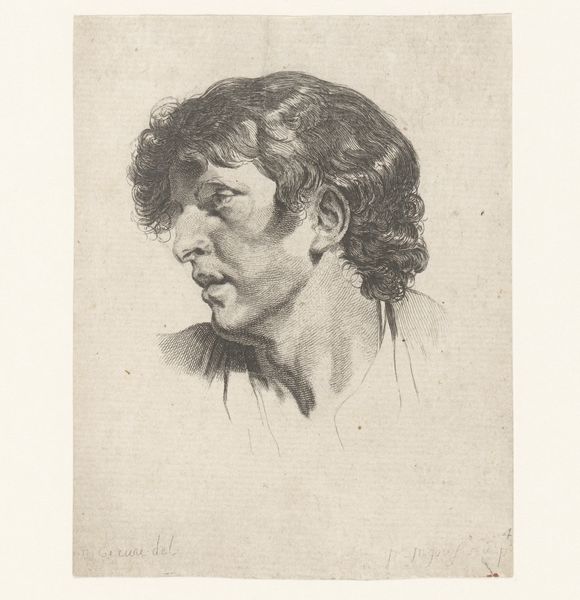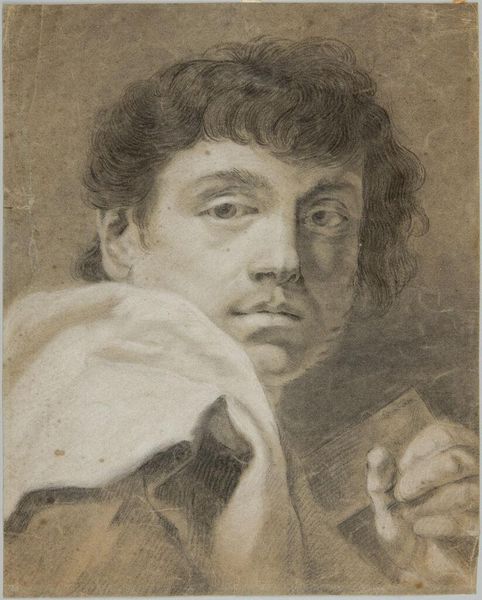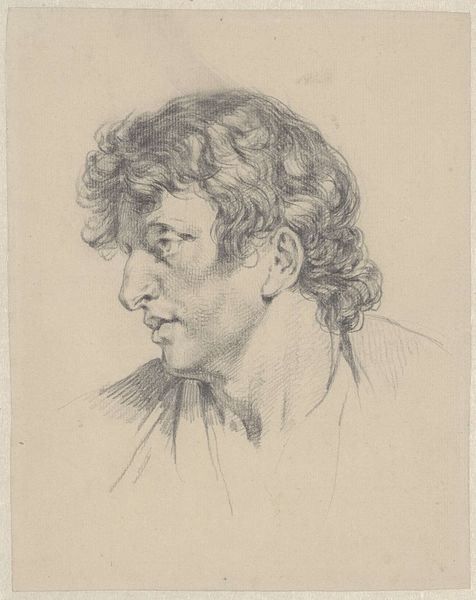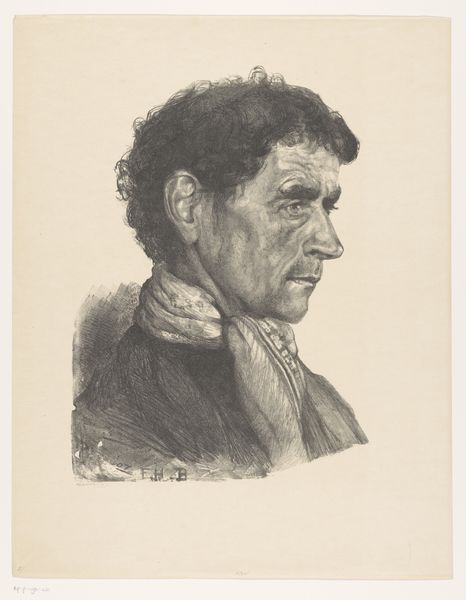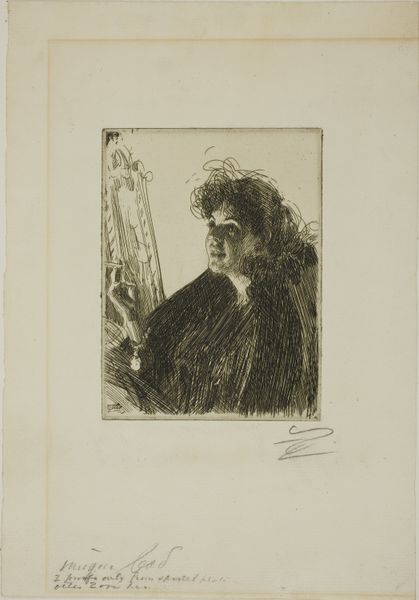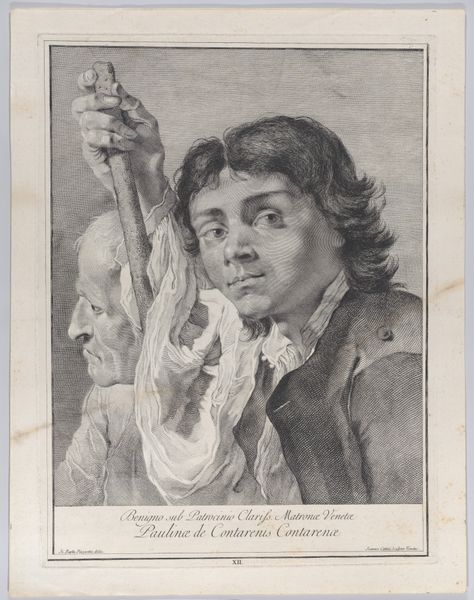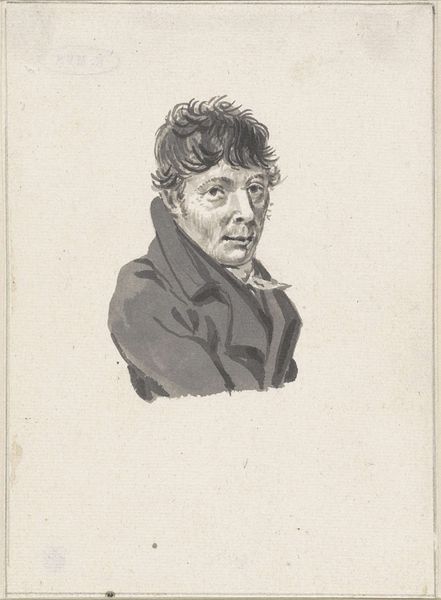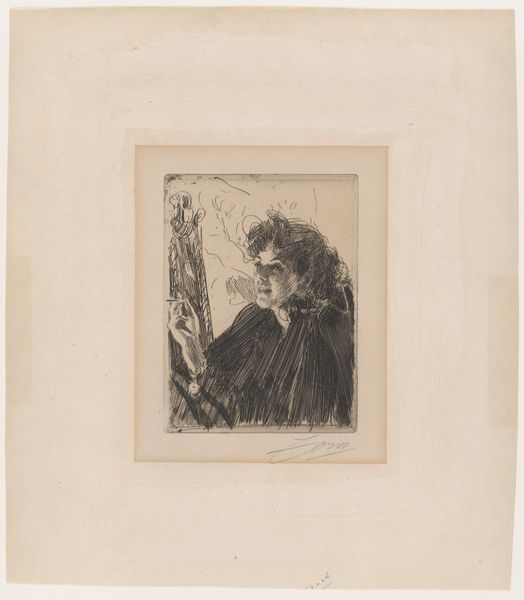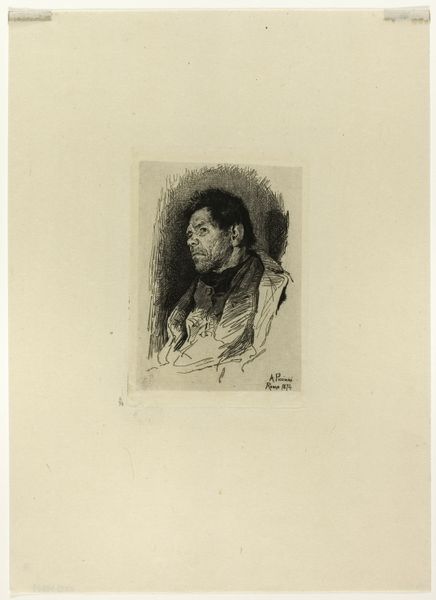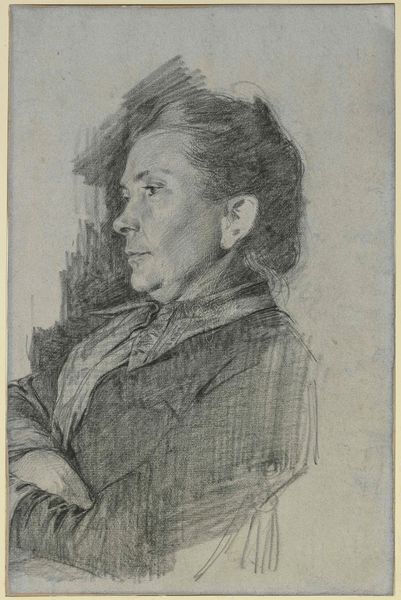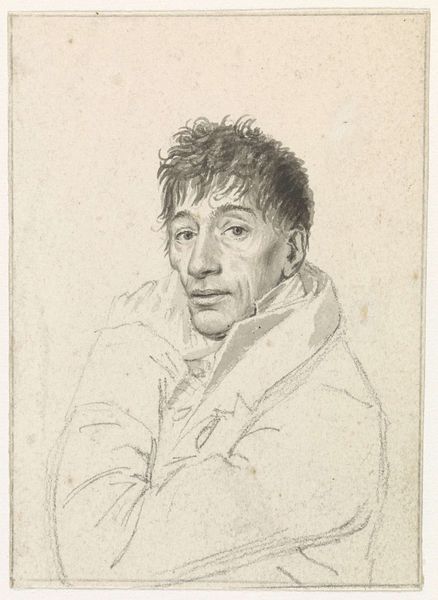
God the Father and Eleven of the Twelve Apostles n.d.
0:00
0:00
drawing, print, paper, engraving
#
portrait
#
drawing
# print
#
paper
#
portrait drawing
#
italy
#
engraving
#
portrait art
Copyright: Public Domain
Curator: Welcome. Before us, we have "God the Father and Eleven of the Twelve Apostles", an engraving print created by Giovanni Marco Pitteri. It is part of the Art Institute of Chicago's collection. What's your immediate take? Editor: There’s a striking somber quality to it. The restrained monochromatic palette and dramatic chiaroscuro contribute to an atmosphere of solemn introspection. The artist's rendering in delicate line work, especially within the face, produces an intriguing tactile dimension. Curator: Pitteri has skillfully used the engraving technique to depict the texture and emotional complexity of the figure. In Christian iconography, each apostle holds particular symbolic weight and significance, usually indicated through unique items. What signs do you notice here? Editor: He is carrying an object partially covered by cloth that almost seems like a shroud, the face shows what may be a melancholic anticipation or reflection, and it seems to resonate deeply with established visual languages of suffering. Curator: The apostle’s gaze seems introspective, doesn't it? The surrounding gloom can refer to the heavy fate of spreading a new doctrine. We see this figure captured in a moment of contemplating what’s ahead. I sense cultural memory at work; we have seen variations of this composition before. Editor: Indeed. The composition invites consideration of balance; there is an area on the left completely absorbed in shadows, creating tension within the image, especially in relation to the illuminated side that features the person’s face, in addition to textures with clear expressive capabilities, something rather expected in drawings and prints, right? Curator: Precisely, and perhaps beyond expressive; those variations remind us of the inherent spirituality associated with the portrayed character, like an external representation of one’s personal qualities. It speaks not just to artistic mastery but the potent capacity of visual imagery to shape and pass on meaning through generations. Editor: Yes, there is no way of approaching a religious work without diving deep into the imagery developed around each specific character to determine visual meaning. Pitteri really encourages close, thoughtful inspection. Curator: He does. These small, detailed elements encourage prolonged viewing. We are left thinking of visual languages, belief, and their ability to survive time through their symbolical strength.
Comments
No comments
Be the first to comment and join the conversation on the ultimate creative platform.
